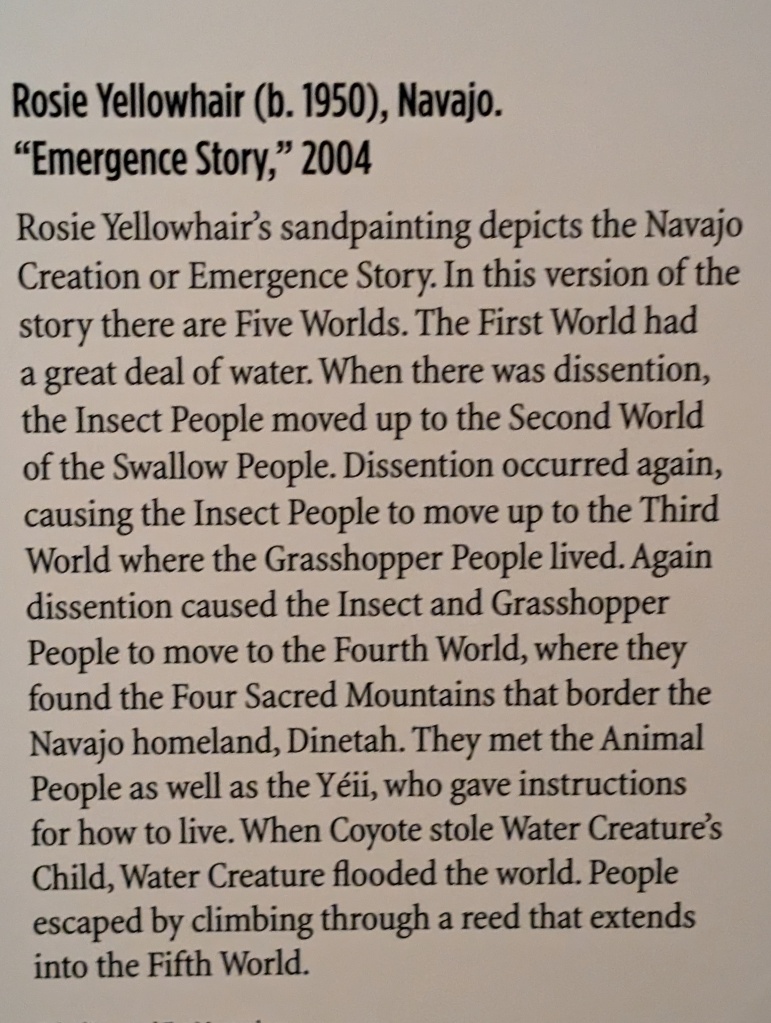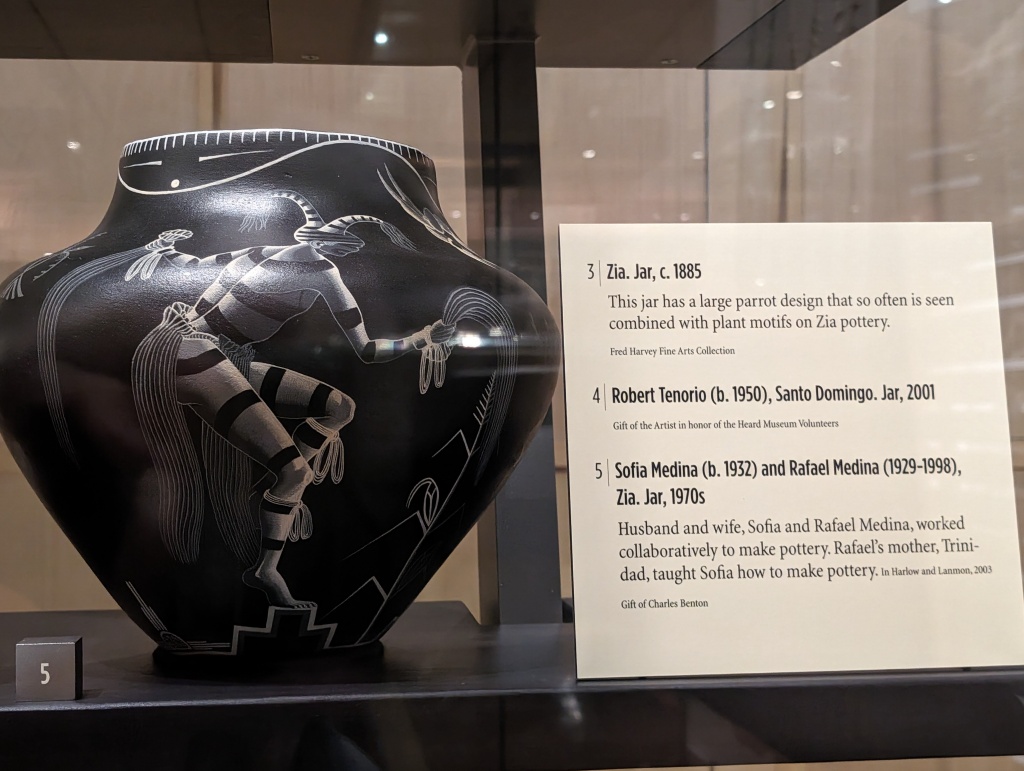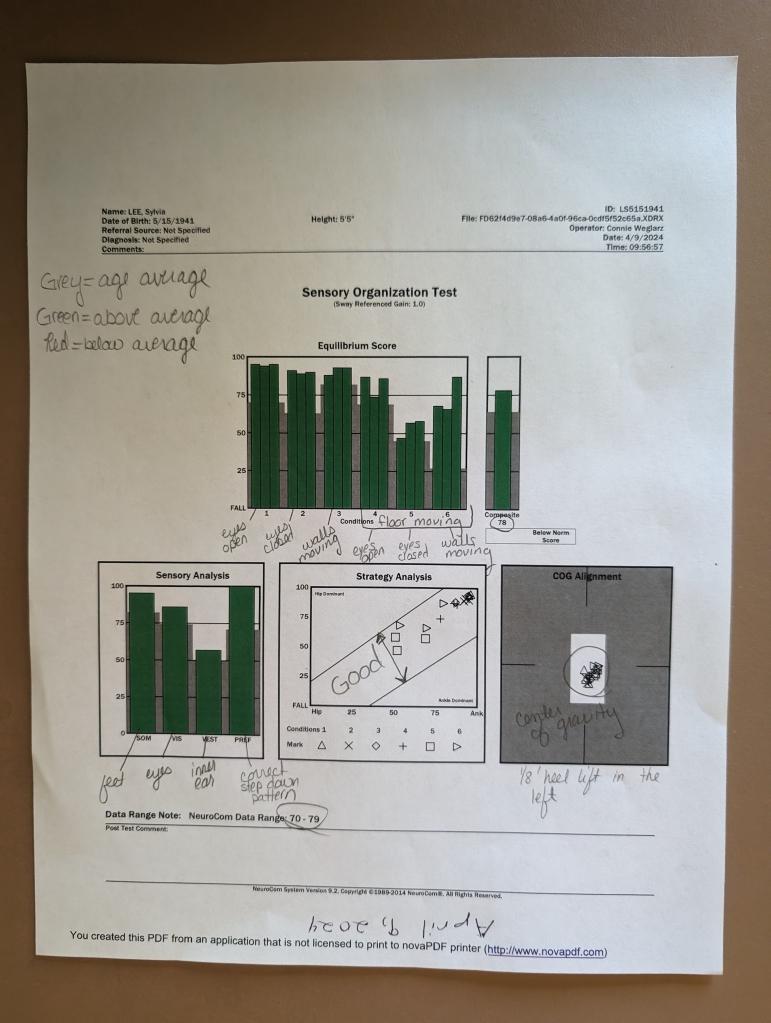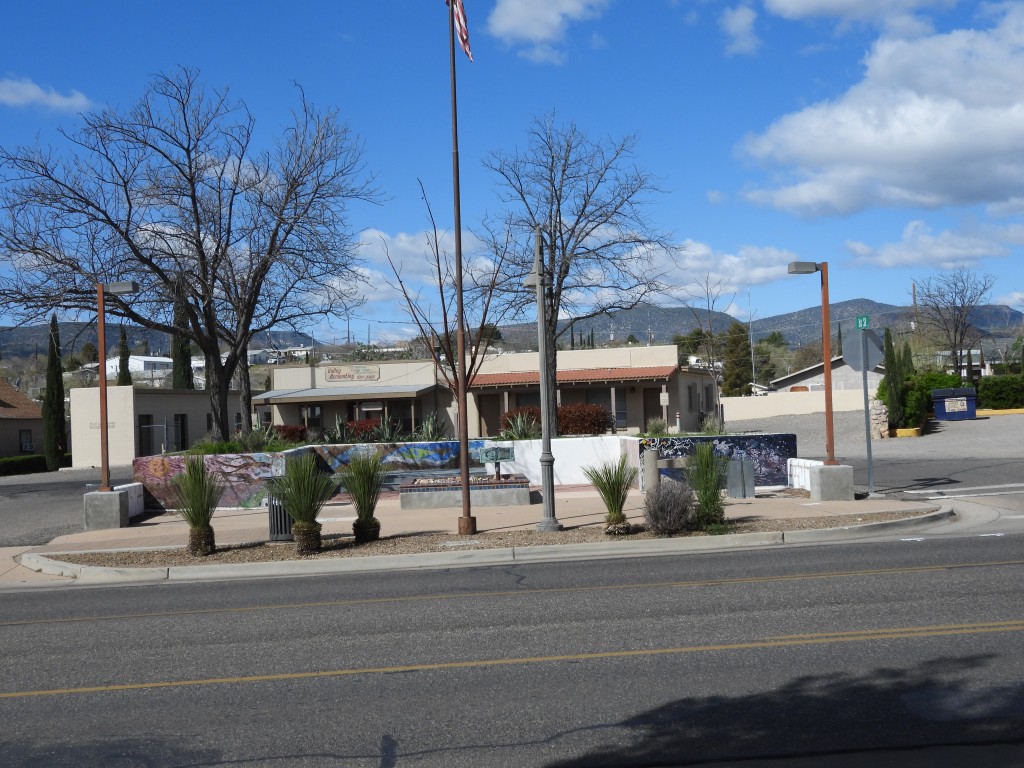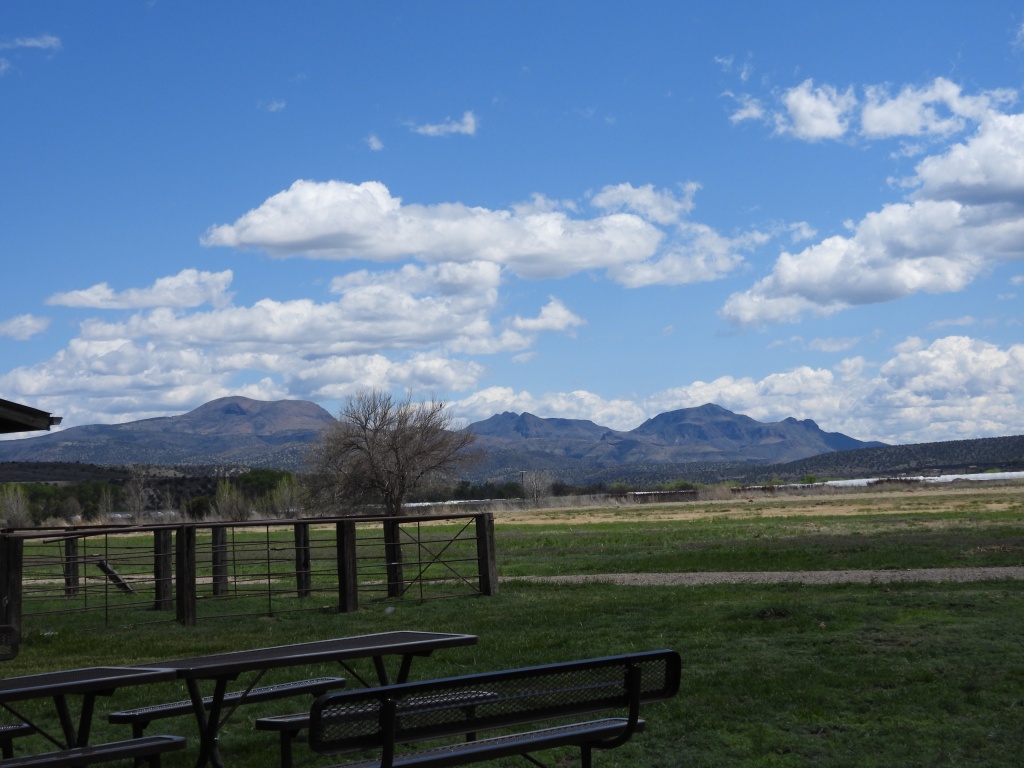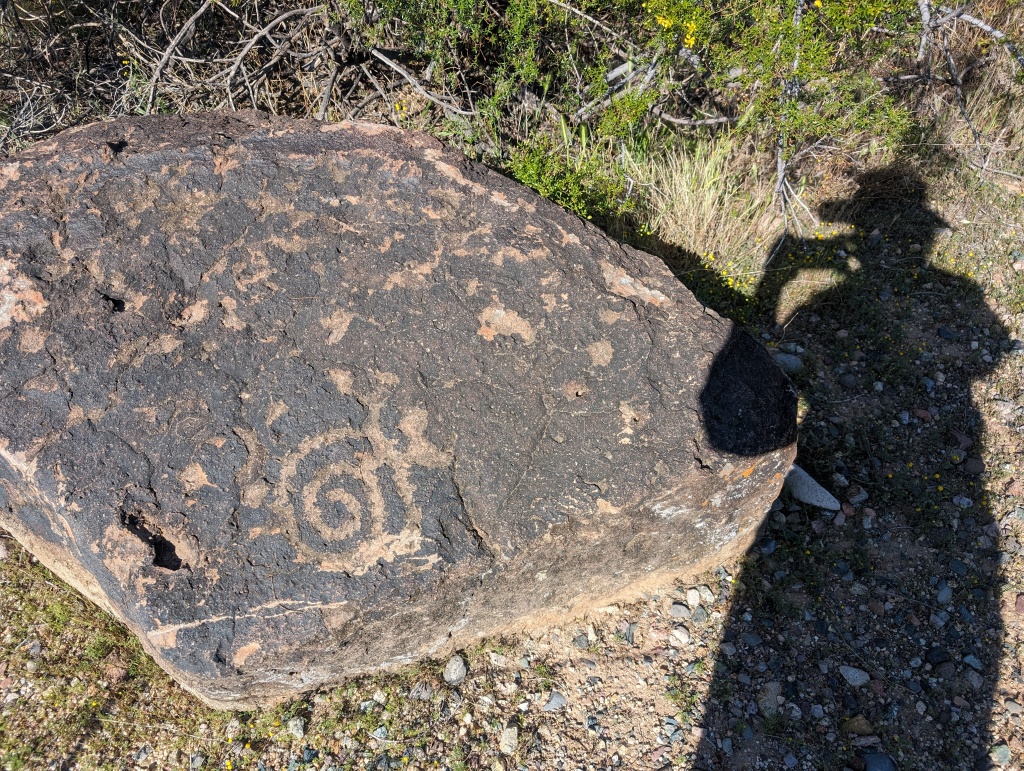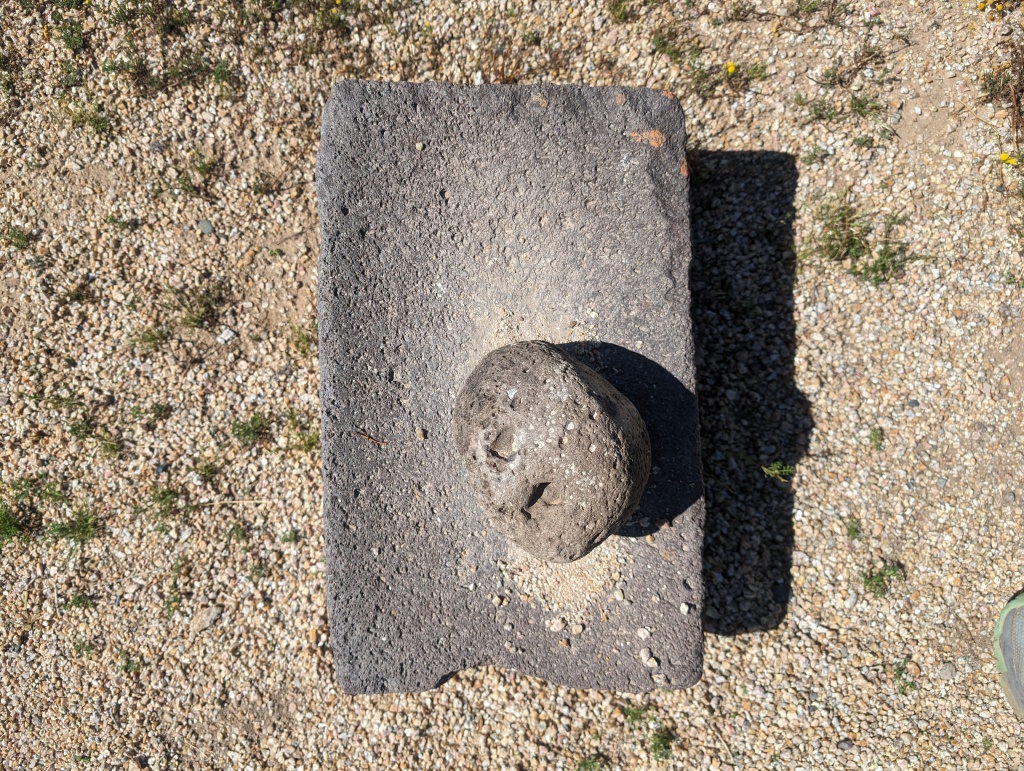No, the acronym does not stand for Sharp Microphone. On April 20, 2024 I again celebrated Earth Day at the SVM table-booth, except that we were now on the Salt River Pima-Maricopa Indian Community land (SRP-MIC). By the way, the Pima are Akimel O’Odham and the Maricopa call themselves Piiposh (spelling varies). This is going to be a long picture story because I attended another event later in the afternoon. I should have enuf pixel room to complete the projected blog. So, relax in a comfortable chair and prepare to read a picture book.
Remember, I have a readign problem that sometimes shows itself in my writing with words that have all the correct letters but they are in the wrong order.
I parked in a paved parking lot at the SE corner of Osborne and Longmore Streets and wondered where the event was being held. I knew it was somewhere very close by. The museum, below, caught my eye and I walked over to it. The museum was closed but the outdoor exhibits were interesting.
Notice the alternate, or former, spelling of the O’Odham word “huhugam.” The Native American tribes are very proud of their warriors who have fought with the US military in wars beginning with WW I (and maybe earlier). The date on this marker seems to be the day the museum was dedicated.

The main entrance of the museum.

Detail of museum walls. Portions are left unplastered so visitors can see how the walls are actually constructed. I think this may have been an 1800s adaptation of ancient construction and European roof and fireplace. Native Americans of southern Arizona probably did build houses like this (but smaller) as their homes after they saw European houses.

This was their home style before the Europeans began invading. It is called a wickiup. The upright poles are acting as the wooden door for the entrance. I like the saguaro family approaching the dwelling.

Roof with rain-resistant layers of brush and mud.

Standing at the museum I saw two white canopies so I headed over their way. It was the event. But there were no signs Event→ at the three parking areas.
I then heard an amplified voice telling vendors to step inside the restaurant to sign in. So I did. Part of the sign-in process was to sign this liability waiver. (Desiree told me no waiver signing was required last year.) I wonder what kind of lawsuit was brought against the tribe during the past year.

After I signed the waiver I was given this T-shirt and a paper bracelet to trade for lunch.

An excellent motto. The heart is where the O’Odham and Piipash people live/once lived.

Apparently it says the same thing in O’Odham. (I asked some natives and the non-English language is O’Odham, not Piiposh.)
Frank was already wearing an appropriate shirt for the day, but he did accept a free shirt for other occasions. Frank, Desiree, and I handled the S’edav Va’aki booth from 9:30 to noon.

SPR-MIC’s Community Development Department table. Community logo and department logo.

I have hiked some of the trails this group has developed on their land north of Mesa, etc.

In this game, players are supposed to match the plastic paw prints with the animal pictures. At first, I thought the plastic piece on far left was a string of coyote or fox scat, but then the toes were pointed out to me. I wish I had taken time to play the game.

A fascinating Bingo game.

An example of a card a player would hold.

This block game is meant to teach what happens when too much of an important section of an environment is removed. The environment collapses.

Players roll the die, below, and remove a block protraying the picture that shows on top when the die stops rolling. Eventually, the player will remove a board during which removal will cause the pile to collapse.


The woman wearing this skirt seemed to be one of the Native Americans who were administering the Earth Day event. I’d never seen these designs on clothing before.

The Rio Reimagined (TRR). Their website has this map in better detail: https://rioreimagined.org/

A craft children (or adults) can do at the TRR table.

Or perhaps decorate this spider. TRR is trying to not only provide cleaner water for humans but for all life that depends on these two rivers.

Center for Native and Urban Wildlife. CNUW

CNUW is associated with the Scottsdale Community College. I wonder if these events help leaders of Native American conservation groups and of non-Native American groups to meet each other and therefore stay in touch and work together.

The current leasees of this land were recently given authority to open the uranimu mine. However, the Havasupai tribe, who live on a year-round-running tributary of the Colorado River in the Grand Canyon, feel effluent from the mine, whether solid or liquid, would foul the Havasupai water and they would no longer have potable water for their bodies and their crops.

Liberty Wildlife states its mission on its tablecloth.

The woman holding the bird’s leash talked about specific reasons why and methods how wildlife are cared for. When possible, the animals are set free after treatment. This bird’s other eye, the one you cannot see, is injured and the bird cannot see well enuf to be able to feed and protect itself in the wild. When staff realized they were not going to be able to release the bird they gradually habituated it to being oohed and aahed at by groups of humans. The bird’s markings are beautiful.

I’ve never been this close to a vulture before. This one did not have an offensive odor. I did not ask, but it appears they are not feeding the bird fresh (or fermented) carrion. This bird was hatched and habituated to humans by a group that “grows” exotic birds for the public. Because this bird thinks humans are part of its family it would not be safe to it to train the bird to take care of itself in the wild.
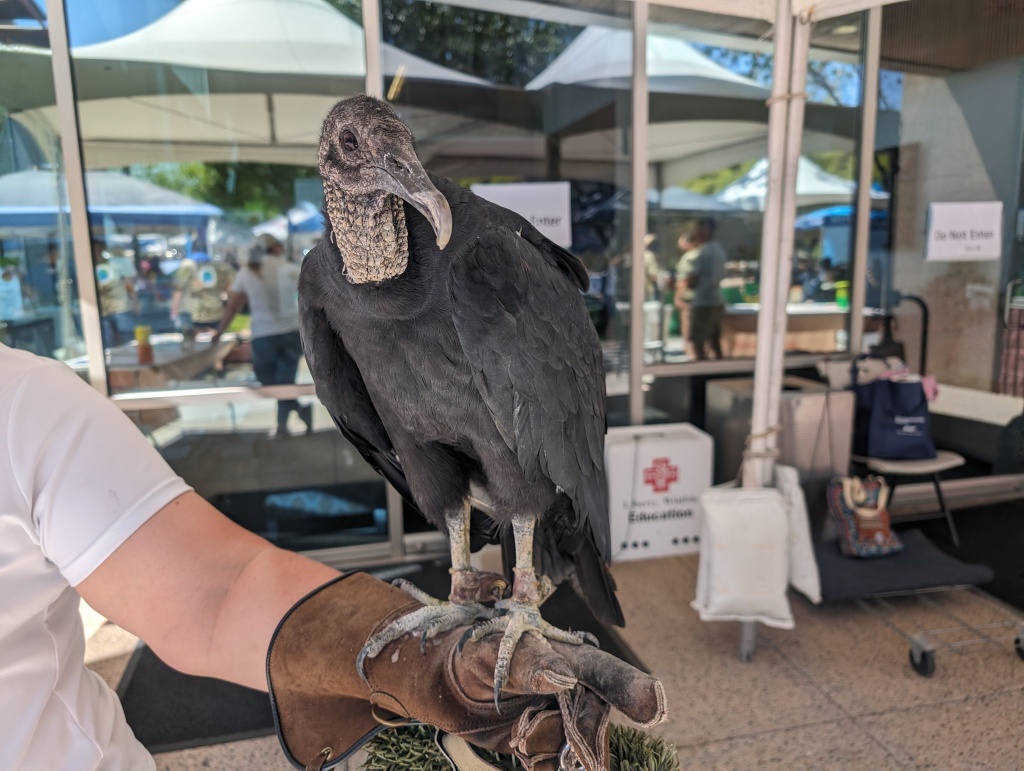
The Native American Fish and Wildlife Society did not have a printed tablecloth so they improvised with safety pins.

The society created interesting teaching games.

Anyone who knows his numbers up to 21 can play this game. That might include children who’ve had only part of a school year of kindergarten.

The group displaying the items in the next few fotos did not have a name for the group anywhere on or around its table. The Native American man sitting at the table was not very friendly, and he only partly answered my questions.
There is a shelter like this on the grounds of S’edav Va’aki. I had wondered what its purpose was. At the present it seems to be a storage area for particular equipment such as a cinder-box grill.

This sign explains it.

When I asked if this was a replica, below, of a war club. The man said it was. I’ve never seen a replica or picture of an O’Odham war club, but it obviously is part of the history of this people.
There were two doll-sized replicas of one-room log houses with roofs and doors that obviously were not of prehistoric design. The man did chat enuf so that he finally stated that the things on display were post-European invasion.

You will notice in these pictures that O’Odham words were not translated into English. I supposed this was a rack for drying food, such as strips of meat. By the time I took the pictures of this replica I was tired of trying to talk with the man so I did not ask questions.

However, one sentence below says “Used as major living space.” The man had angrily told me earlier that the people had “lived” outdoors, that houses were only for storage and for use during inclement weather. He indicated the people slept outside also.
Why would people construct a framework, for “living in”, that did not give any protection from the hot sun?
I tried to tell the man that I appreciated the craftsmanship of the person who wove the tiny basket and wove animal designs it in, but the man kept remarking about other things and did not listen to my compliment.

Everyone else I spoke to this day were freindly and helpful.
Now this is an interesting name for a group.
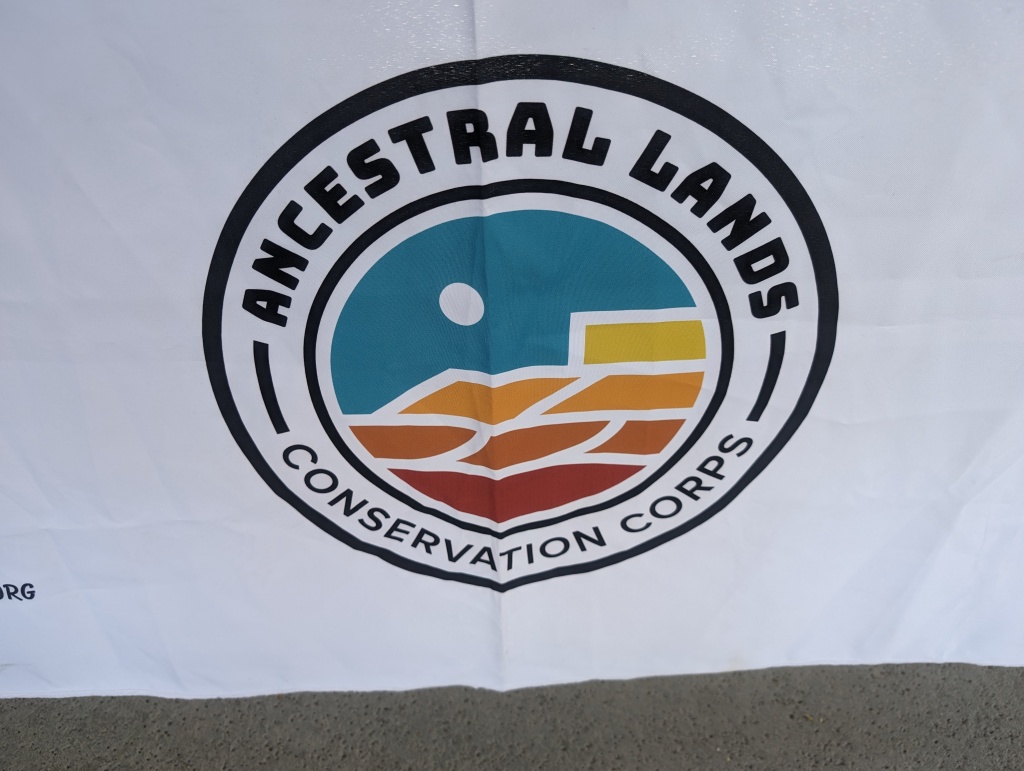
This is a very interesting group. If you’ve never been to the Hubbell Trading Post Monument on the Navajo Reservation, please make plans to visit it. The last time I was there (a half dozen or so years ago) the trading post still sold a lot of items as well as running the premises as a museum.

Employees of this group did repair work on a trail at El Morro National Monument in New Mexico. Top pic is “before,” lower pic is “after.”

I hope the Native American water conservation groups are working together with each other and with state and national groups. I didn’t have time to ask for detailed information from many of the booths that were at the Earth Day event.

A very interesting organization.

And someone was an excellent needle-crafter. Looks like a barely-fledged youngster.

And sculptor. I think these two plastic items were made in a mold. It is an interesting way of creating a stand for each bird.

I hope that a lot of Native American biologists apply for the positions.
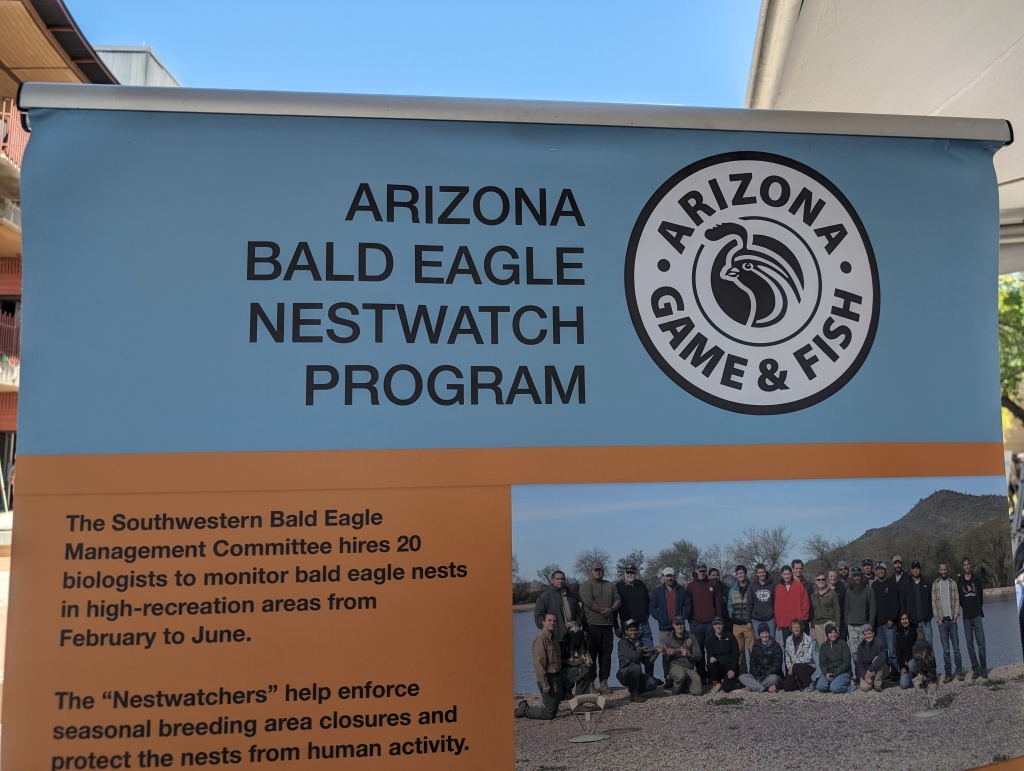
The Arizona Bald Eagle Management Program is a section of CAZCA.

I think you can read the type in the picture below.

They want more hands to help, as well as more money for their conservation efforts.

The young man said he did know the reason for or derivation of the word “Brownfields.” The group keeps an eye/ear out for buildings that are going to be torn down. The group contacts the owners and offers to help with planning for redevelopment of the plot of land.

On the Internet I found this explanation: “EPA’s Brownfields Program provides grants and technical assistance to communities, states, tribes and others to assess, safely clean up and sustainably reuse contaminated properties. Feb 21, 2024″ but I could not find out why the word “Brownfields” is in the name.

“Emergency Management” seemed like a broad topic, so I asked one of the men at the desk. He said the group promotes information for individual people on Dust Storms, Extreme Heat, Flooding, Monsoon Storms, and Preparing for emergency evacuation. As he said each title he handed me a pamphlet and then handed me a “Ready, Set Go!” preparedness card.

Before I could say anything he handed me this Auto Safety Tool, below. He said that if I needed to get out of my car and I couldn’t: I should whallop the window beside me with the metal projection sticking out a quarter of an inch on the right and the window would shatter and I could push the glass away. Then I should put the slit around my seat belt and run it along the seat belt and it would cut the belt so I could get out.
I have a similar tool that I acquired a dozen or more years ago. Its instructions say to hit the very bottom of the window glass because the curvature there makes it makes it the easiest part of the window to break. I asked the man if this tool should be used on a certain part of the window and he said, “No. Just give the glass a strong whallop anywhere.” I accepted the tool and will be keeping it in the door “shelf” at my side, along with the tool I already have, but I am afraid my arms are too weak to give a “strong whallop” to anything. This tool looks easier to use than my older tool.

It was now shortly after 12 noon. My replacement volunteer had arrived and it was time to get my free lunch. I had three choices and I chose this one instead of hot dogs from another truck or some sort of chicken lunch from a portable outdoor cooking setup. I chose this van because the preservatives in wieners make me nauseated and this van was much cuter than the outdoor cooking arrangement.

I chose pulled pork quesadillas. My carrying box came with several large-pancake-looking objects folded over a thin filling. I thought perhaps my quesadillas were skimpy because many people had already been served. But since they were free, I decided to be happy, not offended.

The quesadillas were very hot. A bite threatened to burn my mouth. So I ferried them home, at which time (50 minutes later) they were just right for eating. They were delicious. I ate lunch, took a short nap, then headed for the next event.
The Arizona American Indian Tourism Association AAITA was hosting an Arizona Indian Festival (the one I’d helped with in Scottsdale Feb 3, 2024) Appreciation Dinner at the Arizona Puppet Theater, which was very close to my condo, thank goodness.
Those of you who are grandparents might want to check on upcoming performance dates.

What looked like a former Catholic church was a former Mormon Stake House. (“Stake” not “steak.”) It was surprising that the Mormons abandoned such a beautiful building after only three years. What made them move themselves and their stake house elsewhere?

I parked in the adjacent parking lot and began walking towards the building.

And came to this sign. I did not have any cash with me, so I read farther. From what I could understand a QR code on the cell fone was the only way to pay. Pay where? I walked around and found the person in charge of the appreciation dinner and asked him. I did not have to pay. None of us did. Reading more slowly and carefully now I see that the words “Puppet Theater, Patron Parking, All Others Pay to Park” means that people actually making use of the Puppet Theater Building do not have to pay. But when I read it with an exhausted brain Saturday late afternoon I thought everyone had to pay. In fact, I would still think so if people had insisted we did not have to pay and none of us received parking tickets. Why can’t institutions write in plain English?

The outdoor roofed-over porch area where the dinner was held. The temperature was still in the low 90s when I arrived but I was comfortable in the sahde. Everyone else in the shade looked comfortable, also. I guess we Phoenicians were all still frozen at core from the winter.

This is the original paintwork done on the beams in 1929, almost one hundred years ago! (95 years ago).

The little stars in the table decorations were tiny electric lights that were glowing.

I did not find the restroom. Luckily, I did not need it.

But I entered the area behind the restroom sign to look around in case I needed a restroom later. There were a couple of locked doors, a stairwell, a hall, and this room that can be rented for parties. There was no sign indicating the restrooms might be upstairs, or exactly where they were located.

This poster was one of many on the walls of the can-be-rented room.

A couple of puppets were exhibited in the hall. The picture of the marionette in this case did not turn out well because of reflection of overhead light which blotted out the face. The puppet was in Oriental clothes and I suspect it is an old, valuable item someone has donated to the Puppet Theater. I wonder about the age of the lizard puppet. Was it Oriental, also? Was it used in a scary story, or was it friendly?

I went back outside, walked the length of the porch, and entered the other door. Immediately, I was in a combination gift shop-museum.

Marionettes anyone?

Cautionary sign for people who want to try out a marionette or two before buying or not buying.

Actual figures from

past presentations of Peter Pan shows.

Someone has written a play set in the Sonoran Desert of southern Arizona.

Some famous actors from past performances.

A bit of history about the Puppet Theater. I think GAPT is Greater Arizona Puppet Theater.


The chapel is now the room with gift shop-museum.

What a little love and a lot of money did.

The social hall that is now the theater. Aren’t the entrance doors fascinating!

The restored ceiling.

Back to our dinner area. These two musicians had to sit in the sun while they serenaded us. I hope they were given an extra tip. They started with Woody Guthrie’s “This Land Is Our Land” and went thru a repertoire of songs and readings.

This refers to the unmined portion of a former Magma Mine copper-bearing area that Resolution Copper wants to open.

This license plate had arrived while I was enjoying the building and the food.

Finally . . . THE END


































































